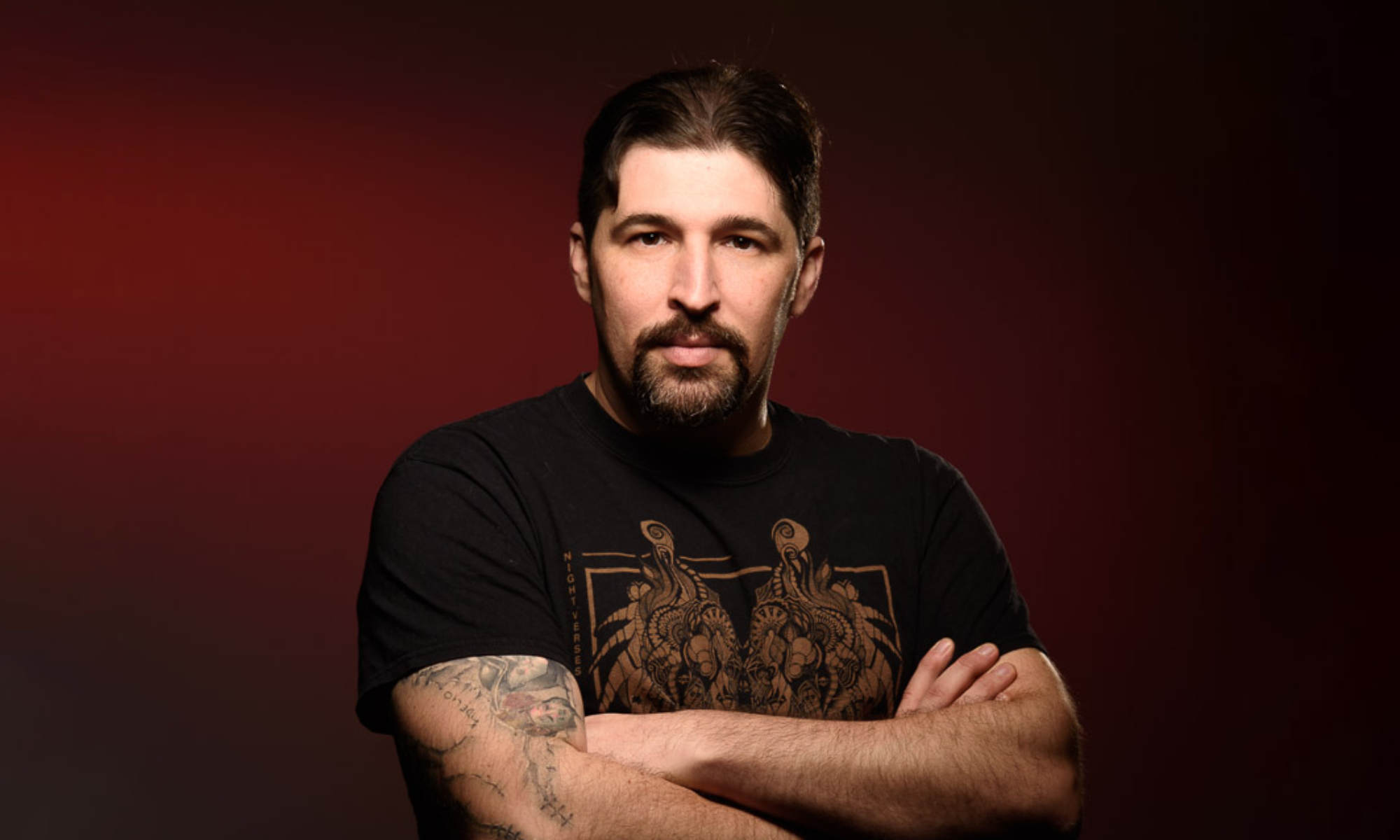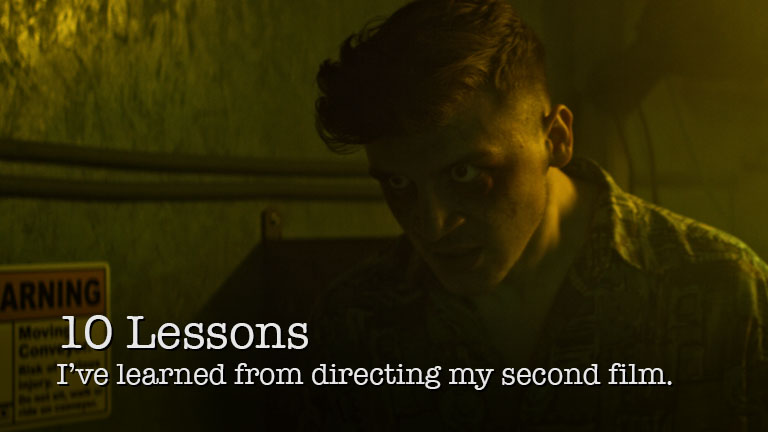
Making a second feature film is actually a fairly rare occurrence. Less than 3% of directors get to make two more films after they’ve made their first one. So in order to be part of those 3%, I needed to do some homework by critically looking at how events unfolded and where I can learn my lessons for the next film to come.
A bit of context…
Ravers (2018) is my second feature film as a director. It’s also the second film with my production company Iron Box Films and has the same writer and producer as my first film, Betsy & Leonard (2012). However, that is pretty much where the similarities between those two films end.
- The budget on Ravers was exponentially larger than on Betsy & Leonard.
- B&L was mostly set inside a flat. Ravers had a set built at Pinewood Studios Wales on a 20,000 sqf stage.
- B&L had two leads and two supports, plus a handful of extras. Ravers had 150 extras and an ensemble cast. Including some really wicked cameos by Natasha Henstridge and Dave Johns.
- B&L was a comedy, Ravers was a horror.
- 3 1/2 weeks filming for B&L. 6 weeks filming for Ravers.
- Ravers had prosthetics, stunts, vfx, sfx, and a bunch of fire. B&L had almost none of those things.
I can’t stress just how different of an experience it was to make these two movies. Having done the first one helped me a lot for the second one. But the scale alone was a whole new challenge.
Several things made it super exciting to get going. I had huge confidence in my production team. Both Raimund Berens and Michael Dobbin are great and stretching every penny to the maximum. I think the script Luke Foster wrote is great and really good fun. I was going to be able to put lots of my favourite music into a movie. And the gap between films is 7 years as we filmed B&L in 2011, and Ravers in 2018. I think it’s safe to say that I was VERY eager to make another one.
1. Casting is pure pragmatism.
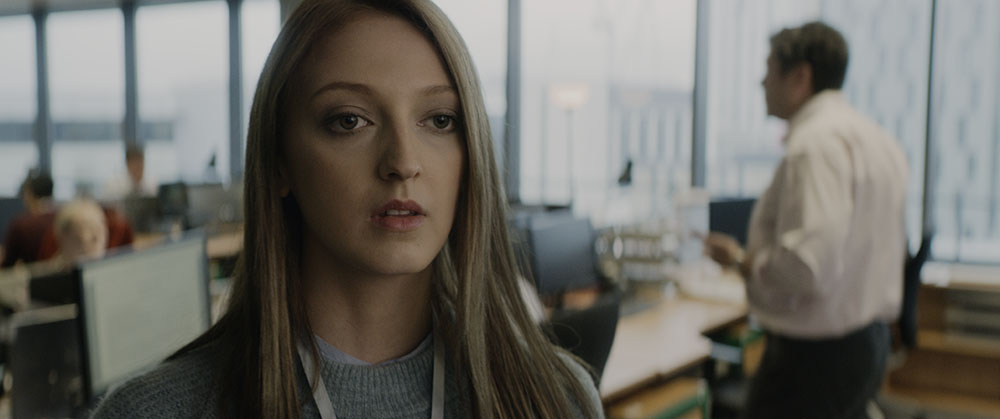
Casting your movie is difficult, especially as an unknown director. Now this wasn’t a surprise to me, but making this movie has just reinforced to me how much luck is actually involved in getting a great cast together for a film.
The honest truth about micro-budget feature films is, you pretty much can only afford unknown actors. The good thing is, there are a lot of amazing actors eager to get a role in a feature film so they can raise their profile, just like you as a director are trying to raise yours. As such, the casting of Betsy & Leonard was fairly straight forward. I, of course, also cast a few actors I had worked with before. But I basically cast whoever I liked, as there were no other variables at play really.
The hard part with casting a film with a (relatively) large budget is, you have to cast your lead actors with the intent that they can help you earn the budget back. That variable makes it much more of a balancing act, resulting in the following conundrum:
Your first choice may not be the best commercial choice. But the best commercial choice, may not even be in your top 10.
Adding to that, even if your first choice is the best commercial choice, they might not be available because they’re either not interested, or their schedule conflicts with yours. There are many other factors too that make casting anything but straight forward. To solve it, it’s a constant balancing act between myself, producers, casting directors and agencies. Especially if you’re still a very unknown director. Actors have their career paths to consider as well. And the more well known they are, the more cautious they are when working with unknown directors.
Another element that made it more difficult on Ravers, was that we had a huge schedule shift by about 6 months. That resulted in a large portion of the cast becoming unavailable to the new schedule. One of the actors who really wanted to play Vince was block booked by a certain TV production in Ireland featuring dragons, making him unavailable for our entire shoot. We also lost our lead actress, who I know would’ve done a very good job with the role.
These things happen, whether you’re a small indie movie or a big studio movie. The only way to manage the casting process is to be as pragmatic as possible. This may sound like I’m complaining, but I’m really not. If you end up with a really good cast, despite the variables and limitations of the process, you’ve done something really special. And in my case, I ended up working with a really incredible group of people. Georgia Hirst, Danny Kirrane, Kamal Angelo Bolden, Maria Volk and Manpreet Bambra. Let alone all the other wicked cast members, extras and cameos I got to have in my little movie. I really love my cast for Ravers.
Some of you reading this may have seen the film, so I’m going to address the elephant in the room.
Yes, I gave the role of a drug-dealer to the only African-American actor in the film. I know how it looks and it was on my mind immediately after Kamal delivered his amazing audition.
Let me start with this. Vince was a ‘white British’ character who was sleazy and dislikable from the very get go. We didn’t write Vince as a black character. And before our schedule shift, we had a white actor attached to the role, who ended up dropping out. But when I saw Kamal’s audition, it was truly amazing. He changed the character from a sleazy, unlikeable dude, to a really charming, fun guy who just gets repeatedly screwed over by the other characters in the film. That wasn’t written. He played it that way and I immediately fell in love with that.
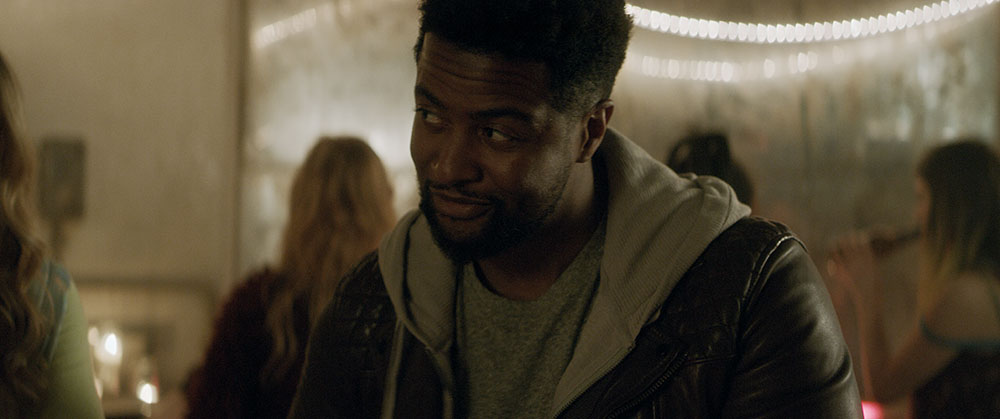
Point is, I knew what it could mean to cast a black actor in a what is considered a stereotypical role for black actors. But here I had the best actor who delivered the best and most interesting audition, which would hugely improve the character we initially wrote.
But instead of giving the role to the best actor, I SHOULDN’T give the role to the black actor, because it would be too risky in today’s environment and could end up making ME look bad. Essentially I’d be NOT casting someone because they’re black.
And to my mind, that is much worse. Kamal is a brilliant actor and he knocked the performance out of the park. So I stand by my decision to cast the best actor with the best audition.
2. Pre-production is like dancing five dances at once
The biggest challenge is always to make it all work for the money you have. It’s a continuous process of meetings, approvals, tweaks, rewrites, more meetings, scheduling, rescheduling, etc. until you finally end up with what looks like a plan for the next few weeks.
Our pre-production was mostly very smooth. The biggest hurdle we had to overcome was the amount of extras we could put on screen and the size of the gantry set. Just to make it work with our budget, the length of the gantry got much shorter than what we wrote in the script. We just couldn’t afford to make it bigger. And sadly, what should’ve been a big on-screen drop, became a drop that mostly happens off-camera. It still was fun to shoot, but it never got the scale that a set piece like that really needed.
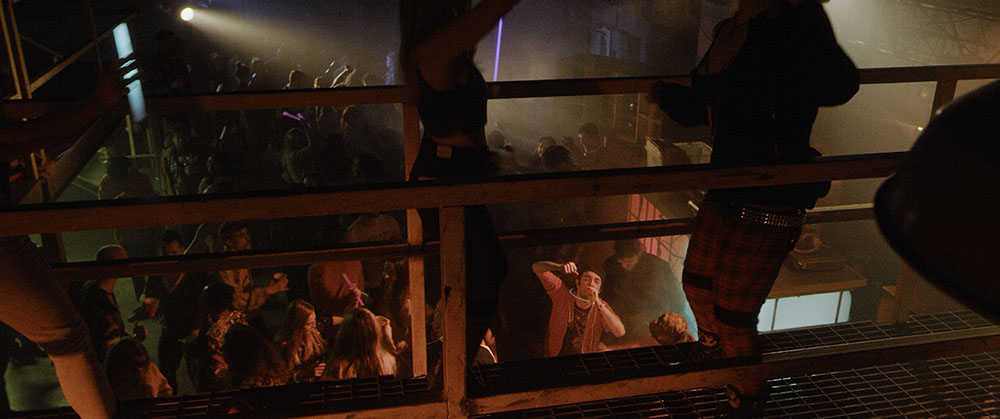
The most fun I had during prep was working with our production designer, Keith Dunne, to make the set work. The story requires some very specific things, which when you try to transfer those ideas from script to reality, sometimes don’t work, or you just can’t afford them. So you try many other things in a way that you don’t run into story problems or ‘plot holes.’ As a production designer, you also have to give a lot of creative room to the team, so they have as many options as possible. And that is hard, no matter who you are.
My favourite part was probably selecting the props. My favourite prop, was the stunt foam turntables which our stunt actor could fall onto without injuring himself. But they looked ridiculously real. Truly amazing.
Retaining focus during prep is not easy. A lot of departments constantly require your attention and it’s a constant dance between them. Your decisions of course have budget consequences and it happened regularly that I had to rethink my initial decision because it turns out it would break the bank or break the schedule.
Just as an example, we weren’t allowed to smoke cigarettes in the stage because of the smoking laws in Wales. That meant every single cigarette was an SFX piece which needed an SFX supervisor. It cost us so much money per day, I had to pick the specific dates we would see cigarettes on screen, because it cost us so much money just to have them. Decisions like this were daily.
Time is the one aspect that you can’t fight. It’ll pass whether you do something or not. To make the most of the 6 weeks was the most complicated dance of them all, because the schedule would keep shifting even during production. Often, everyone in the crew is looking to you for answers on how certain conflicts and problems can be solved. Many have nothing specifically to do with directing.
But it is a lot of fun if you’ve got the right heads of department working with you.
3. Storyboarding, shot-lists, and communication
This is probably the biggest lesson I learnt on the shoot.
I like to move the camera around the actors, rather than dictating what the shot should be first and then make the actors move within those constraints. I’m only ever shot specific when there are montage sequences, vfx, sfx, stunts, or multiple departments involved in a specific shot. If I can, I generally prefer blocking the camera after I block the actors. And that means writing a shot list for those scenes is a pointless exercise. I used to spend hours writing lists which I didn’t stick to at all because the blocking would change it anyway. Especially in dialogue scenes.
So to prep the scenes, I draw blocking charts to help speed things up on set. I find them a much more useful tool than shot lists, especially with larger set pieces. I drew them for every single scene on my first film, with the intent of helping my own prep, but also helping the crew prep for upcoming scenes.
But it turned out, nobody in my crew on Betsy & Leonard cared about the blocking charts. They were doing all their prep based on the script, and couldn’t really do anything until they could SEE through the lens what the camera is looking at. So I had done A LOT of prep which nobody was really interested in, because they couldn’t really do much with it until they saw where the camera was pointing.
On Ravers, most of my prep was storyboards, which I gave to the departments to help communicate what needs to be shot. But for most dialogue scenes, I didn’t bother drawing them up, because I wanted to block the actors first anyway.
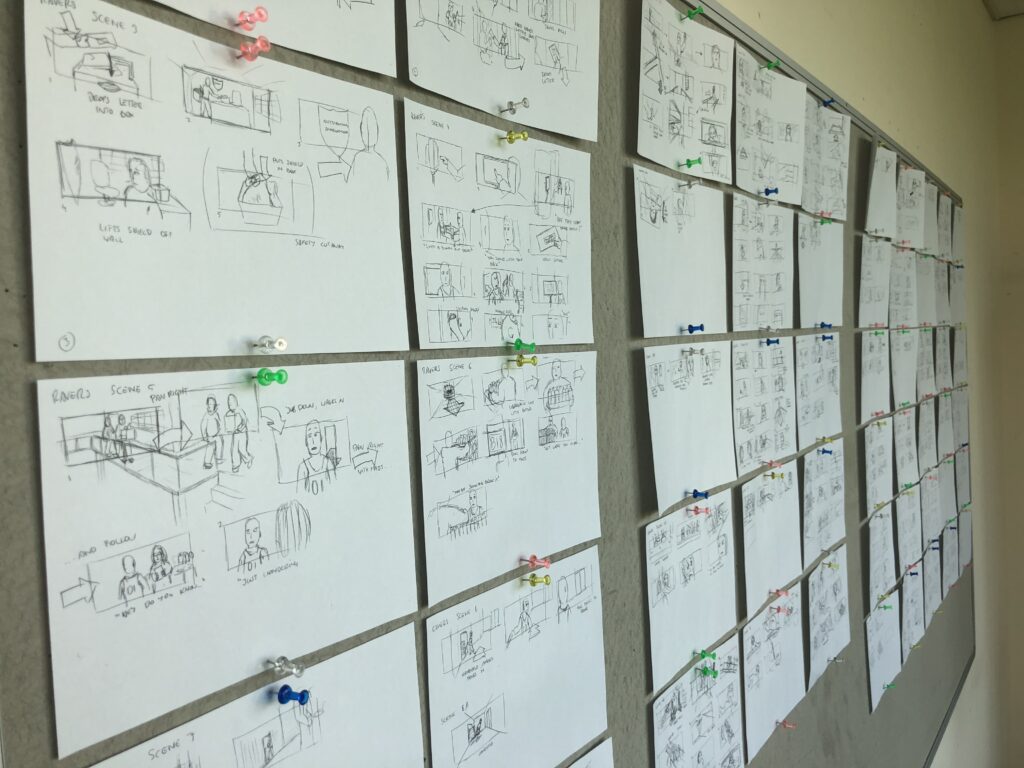
BUT… here’s the lesson I learned. On a production of this scale, you NEED to write shot lists, even if they change during filming. It’s the bureaucratic backbone of a film production. They know you might not stick to it, but at least each department will be working towards it and are not wondering what the hell you’re going to do. However, and this is the more cynical side, departments can also cover their ass with it too. If you end up changing your shots and it’s not what they prepped for, departments can hold up their hands and go “well it’s not what we prepped for because the shot list says THIS.” And that is the unfortunate side effect of it.
Thankfully that never happened to me on Ravers, but that I didn’t do shot lists was flagged up by multiple departments, including the production team. It basically covers everybody’s ass. Including the director if a certain department didn’t do their preparation properly. You can point to the shot list and say “Here’s the shot we were going to do.” … The only problem I see with this, however, is that often you find things on set that you couldn’t plan for. And often those are the best bits. It’s the nature of creative collaboration. Rehearsals can be a big part of the structuring of this. I’ll talk about that later though.
Shot lists are also used for measuring how many set ups you have planned for each day, and how many you actually do. They’re used for checking who used them and who didn’t. Shot lists aren’t really about the creativity of it. They’re about the necessary bureaucracy of a film production. Even if you might not stick to them, it’s a bureaucratic necessity for a production, because they’re used to communicate between departments.
The point is, you have to do them. Even if they might be ceremonial. If you stick to them, everybody is happy. If not, everybody is covered.
4. Know your visual grammar
I learned this on my first film, but it was even more important on this one.
Knowing your grammar may sound fundamental, but it’s actually true and is easy to forget. Your grammar informs your shot list, and if you have to change your shot list, you need to know your grammar inside out, so you can replace the shots with something that still fits into the film.
What do I mean with grammar? Now the basic grammar of film is fairly obvious. Wide Shots, Mid shots, Close ups, long takes, shot reverse-shot, dollying, zooming etc, etc. Most people get what those shots do on a basic level. But I’m talking about a much more detailed grammar that is bespoke to your film and your narrative. To compare it to music, it’s not just knowing which notes are on the piano and what kind of scales you can play. But it’s more like choosing the scale, knowing the chords, and even choosing how you decide to perform certain sections of the song. To bring it back to film, it’s HOW to frame a character in that moment; WHEN you move the camera (if at all!); WHAT it means when you do something and how does that play out throughout the narrative.
So for example, you choose to frame a certain character one way in the beginning of the film, because of what they go through, and because they change, you gradually evolve that into a different framing by the end of the film. And you can do that with all the variables at play when creating your grammar. Or you may choose to not do that at all and simply stage consistently in wide shots, using depth, as opposed to framing. The idea is that the grammar informs the motivation of your story and your characters.
Deciding on the specific visual grammar of your film is extremely helpful. It’ll help in discussions with your cinematographer, camera operators and ultimately your editor. But it’ll also help you when you need to improvise within the limitations of your production and still stick to your narrative.
Is grammar generally more subtle and not blatantly in your face? Yes it is, but it’s part of the fabric and it allows for a layer in the story that can make a film re-watchable and allows you to see more things than just the basic narrative.
5. Get the wide shots and get the close ups!
When filming action or large set pieces, try to get as many spectacular wide shots into your film as possible. I know this may sound obvious, but it’s especially true if you’re filming interiors. It can make the film ‘feel’ small if you don’t. And if your budget isn’t big, you’ll have to specifically plan for those wide shots. You should do the same with exteriors too. Generally speaking, the wider the shot, the more you see, the bigger it feels, the more impressive your film can look. And that will help a lot if you don’t have a lot of money.
Unfortunately, a lot of the compromises on the scale of Ravers (mostly due to the limited budget and schedule) caused me having to reduce the width of my shots more and more. There were several scenes where a wider shot than what I could get would’ve been very useful. But wider shots mean more of everything. And if you don’t have more, you’re stuck having to cut shots that you just can’t afford to get. Planning for them during prep will at least allow for some of that.
But if you can get a wide shot, get it. Show off your set. Show off your lighting, etc. Go wide. It’s worth it. I know I should’ve gone wider than I did in several instances.
Conversely, you’d be surprised how often you need a close up of a piece of information that you think is obvious but isn’t. Getting the insert close-up is really important too. Don’t forget it. If you have a second unit to do them, make sure you clearly point out to them what the shot is supposed to look like. If you don’t they probably won’t get what you need in the edit.
6. Directing an ensemble is hard, but lots of fun.
It was fucking great. That’s the best way I can describe it. I really loved working with my cast, especially when I got to work with all of them at once. They were so good to me on set and I hope I was someone they liked working with too. My favourite scene to direct was the cafeteria scene towards the beginning of the film. It introduces and establishes so many things about the characters and the setting all in one go. It was lovely to work out the blocking with them. Here and there we rearranged some dialogue to help it flow better. And once it flowed, it worked so great. It’s a scene I’m really proud of. Now it might not mean a lot to others, but this one, was my favourite to do. That scene, and the scene between Becky and Hannah on the dance floor. Very proud of both of those.
The hardest part of dealing with an ensemble, is that towards the end of the day, some scenes will always get less time than the scenes at the beginning of the day. And one thing I noticed in hind sight, is that Danny Kirrane’s scenes, often got pushed to the end of the day and we’d be forced to rush through them, not giving Danny and me enough time to properly work through the scenes. Danny however is an amazing professional. He was always 100% prepared and knocked it out of the park in every take. But I do regret not giving him more room to manoeuvre in the scenes we did with him, because so many times, his scenes fell to the end of the shooting day.
There is something important to mention here though. If you want to save time on set and make sure you get the most out of the limited time you have with the cast and crew etc, then you NEED to have rehearsals with the actors before the shoot. It makes all the difference and creates much more focus with the story being told. Here’s why:
Rehearsals do two things:
1. Often, until you hear the words coming out of the actor’s mouth, you have no idea if it really works or not. So if the writer can be present, you have a chance to see which lines work and which lines don’t. Then you have an opportunity to tweak the dialogue so the characterisation works even better, without wasting expensive set time.
2. It speeds up the filming of scenes. If you’re well rehearsed and you don’t need to rewrite dialogue anymore, then you’re really maximising the time you spend on set. Getting more shots, more takes, and if things need to change, you have more room to manoeuvre.
In my opinion, two weeks of rehearsals before production will help so much. And it’s a shame that rehearsals have become so rare. It improves all performances and it maximises the time on set. I had two weeks of rehearsals on my first film and it was so helpful to really fine tune the characters before we started filming. With a cast as large as Ravers, the few rehearsals we had really helped. But I know if we had more, we could’ve been even better.
I will certainly try to insist on having more rehearsals on my next film. It’s a good practice and I recommend it everyone.
7. Double check things that are important to you
I unfortunately failed to communicate beforehand that certain things were essential to get and I didn’t double check that these things are paid attention to. Departments need to prioritise their workload and focus on the things that they think is important. There were a few instances where I thought things that seemed obviously important in the script, weren’t reinforced by me to the departments. So when the time came and those things either weren’t there, or weren’t dealt with in a way that met my expectation, all I could do was simply deal with something that I knew might not work well later on. But it was too late to fix it now. I either left those things too late or didn’t check them at all before it was time to. And I should have. It could’ve prevented a few awkward moments in the film and during the production.
To be honest, some of those problems, probably could’ve been prevented with shot lists. Writing a shot list could’ve reminded me to double check on those things. Writing it could’ve reminded me to at least bring them up earlier.
8. Editing and the time it takes
Because we were pushing for a FrightFest debut, our post-production schedule got truncated a lot. We finished filming in April and ended up delivering the finished film at the end of August. We were initially planning on completing it in October, and the only place to cut that time out was in the editing. Here I need to emphasise that this was entirely my decision to cut the editing time, because a FrightFest debut was important to me.
Now I was confident that we could deliver the film in the timeframe that we had. But only when we barely got to the finish line was I aware just how much time you really need to edit a film.
To be honest, in hind sight, I’m amazed we were able to deliver the film in the time that we did. It was a very, very tight post-production schedule. And I do feel that the edit suffered from having to rush through it. Now most people wont notice or care. But I know there are things that needed refining. Places where I’d prefer cutting to a different shot, or where things need improving.
I tell myself that every director feels that way about their films. It’s never enough time, it’s never enough money, etc etc. So I’m neither the first to experience this, nor is my experience unique to me. It’s pretty much the same for everyone.
But I do think our editing time was too short and the film really could’ve benefitted from the extra weeks we could’ve had.
9. Testing with an audience and hearing people’s opinions.
Ok, this isn’t really a lesson but more of an anecdote.
We only did one test screening, and it wasn’t really to revise the film much, because we didn’t really have time to recut and test the film again. It was more to assess what demographic likes this kind of film and to get a rough idea of how to market the film.
But this was my first movie ever to be audience tested, so of course I wanted to learn what I could from this experience. I sat in the cinema, trying to observe where and how the audience reacted. The good thing is, the laughs came when they needed to, the jump scare worked where it was supposed to, the gore looked great and got a fantastic reaction overall. The screening went really well and was a very pleasant experience.
UNTIL… the very end.
As people were filling out the feedback forms, I was listening around me as they were discussing what film they could compare this to, who their favourite character was, etc. Generally positive reactions. Except for one person, who happened to sit right next to me. The moment the screen went black and the credits rolled, that person said very audibly “Well that was the worst thing I’ve ever seen.”
I’m a pretty resilient person, but that stung. I know this is just one voice out of many, and I know the majority of people really enjoyed themselves. But just hurts to hear that. It’s totally fine that this person didn’t like my film. Can’t make everyone happy. But that’s a moment I will remember for the rest of my life.
10. Learn your lessons!
Rather than being defensive and protectionist, it’s important to be self-critical. It’s important to learn from your experiences and to recognise when you did something wrong and can do something better. It may not feel good to hear people criticise you, but it’s really important that you reflect upon your decisions to help improve yourself. Writing this is article is my attempt at doing that.
It’s quite a big experience to have to make a film of this size, and it’s a huge privilege too. Most people who want to be directors, only dream of doing this, and I’ve now been able to do it twice. And I’m working hard to make sure there will be a third. It’s definitely a difficult time in the industry now, but it’s never easy, no matter what you do.
But I believe that the only way to get better at it, is to keep working on your craft, and on your knowledge. Most importantly, reassessing what you think you know. It’s very easy to get trapped in a certain mindset. And I never want to find myself limited by that. In fact, that kind of self-awareness is hugely important to me.
Thanks for reading this. I know it’s a bit lengthy, but I hope it’s as helpful to you as it was for me to write it.
